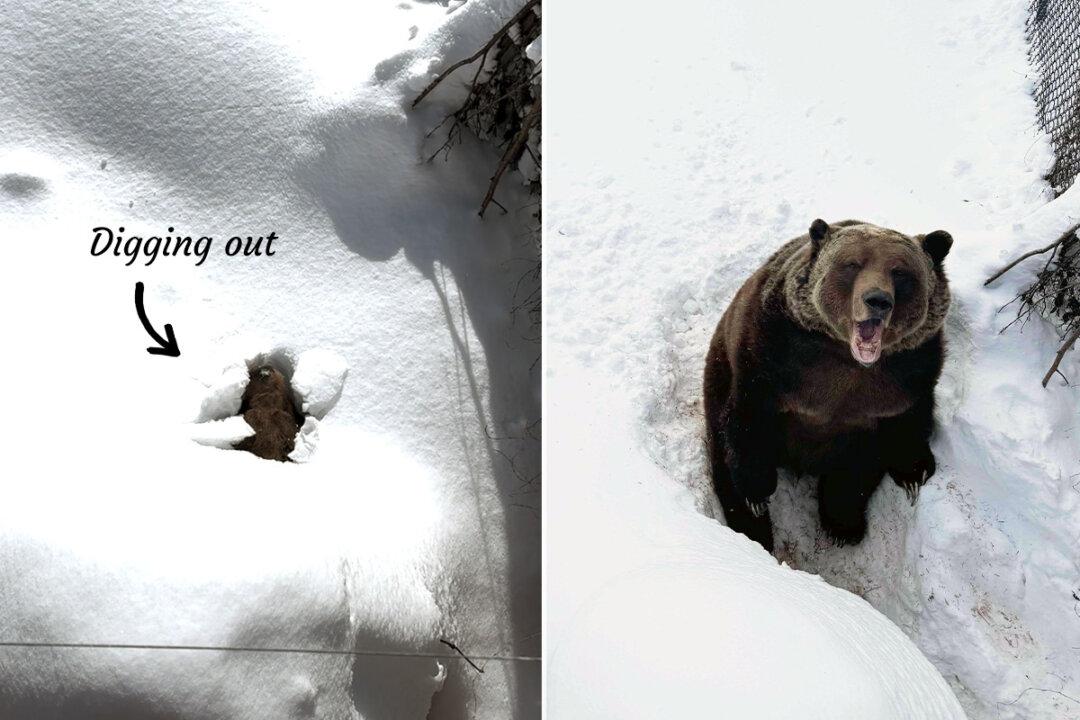An amusing video has captured Boo, a 22-year-old grizzly bear, popping his head out through the snow and emerging from his winter slumber.
On March 10, 2024, when the infamous grizzly sensed warmer temperatures were on the rise, he decided to wake up to bask in some sunshine, 32-year-old Cat Cowan said, manager of Kicking Horse Grizzly Bear Refuge (KHBR) at Kicking Horse Mountain Resort, Canada.






